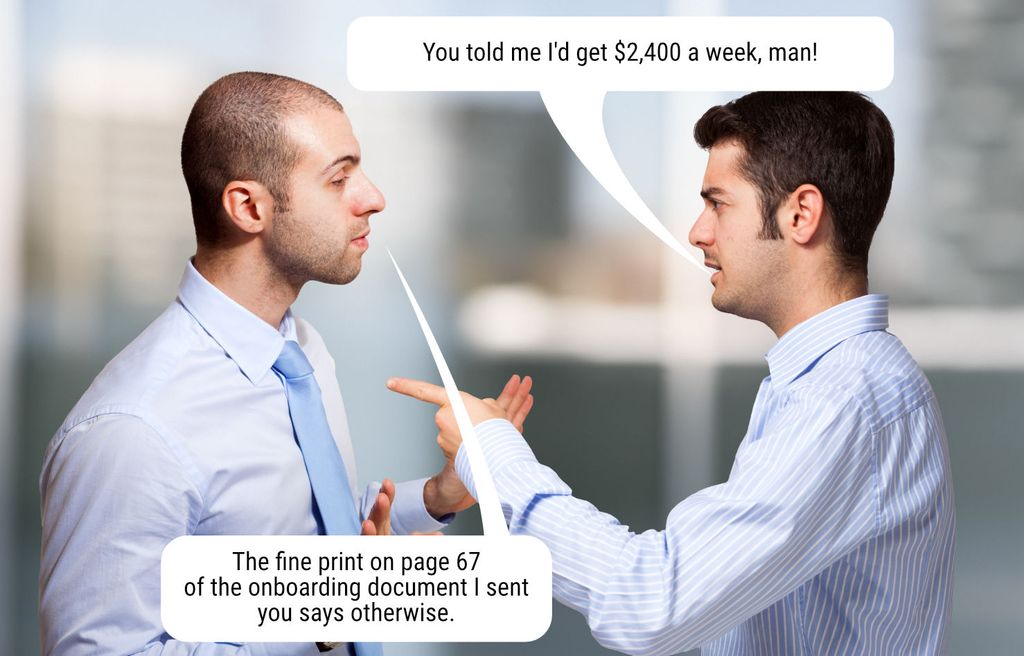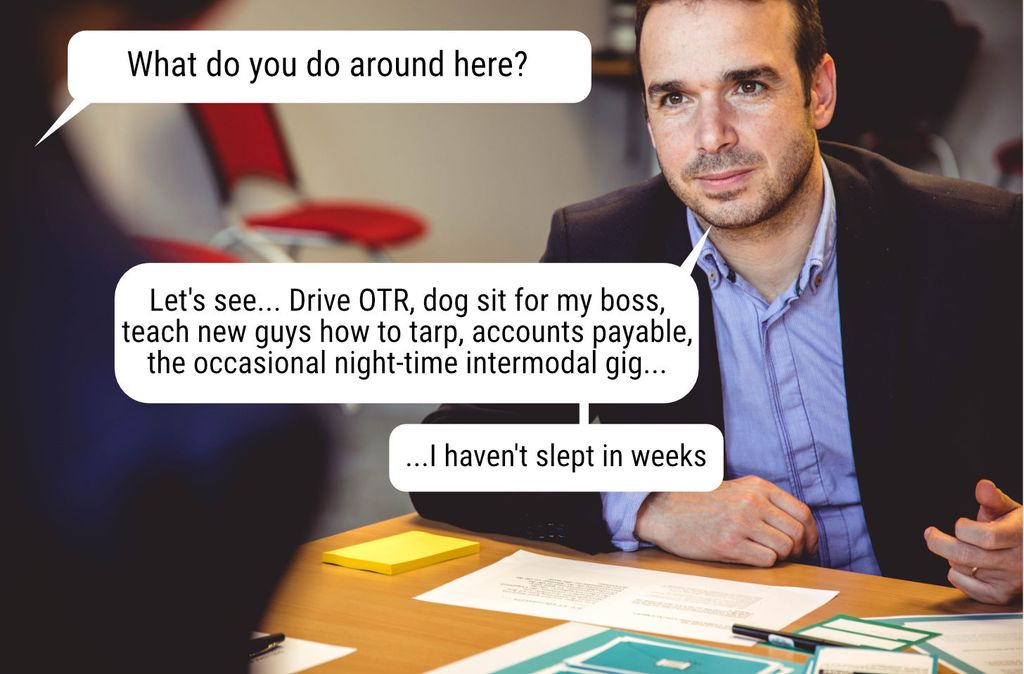In case you needed a reminder, reducing turnover is a tricky thing indeed.
I don’t have a magic overnight solution, but I do have some advice about things you should keep in mind if you want to start actively reducing your driver turnover rate.
The solution to driver turnover requires you to absorb, implement, and maintain attitudes that will lead you in the right direction.
So, without further ado, let's look at the four things you can keep in mind to reduce your turnover.
1. Be transparent about your job
Make transparency and honesty part of your corporate policy.
I’m going to fall back on a phrase that has become somewhat of a cliche in the trucking world - “retention starts at the beginning”, and of the things you can do from the very beginning is be honest and transparent with your drivers.
Just remember that “bending the truth” about your jobs or making it seem better than it actually is, is a short term solution for a long term problem, and will probably end up hurting you more than it helps you.
By providing drivers with a full understanding of what they should expect from your job, you’ll earn their trust and calibrate their expectations. Breaking down the driver’s pay should also be done ASAP. If the driver understands on what basis he gets paid and still takes the job, he’ll be more likely to stick around. An informed hire is a strong hire.

Don't be that guy...
Being clear about your jobs is also important when you’re dealing with newer drivers. Despite their training, many newer drivers are unaware of certain “realities” of the industry. As such, they can be seduced by competitors offering them a deal that, on paper, looks very good (but is probably not that great in reality).
If your job is competitively positioned, you should have no issue setting the expectations of newer drivers about the realities of the work ahead of them.
2. Communicate with your drivers
For some reason, we fall into the trap of thinking that communication has a time limit - that once you’re done with onboarding and orientation, that’s it. Some companies go as far as making it needlessly difficult for a driver to ever come into contact with a person they can talk to about their job. But why?
There is no time limit to communication - it never stops being important. Talking with and listening to your drivers is one of the simplest things you can do, and one of the things that has been demonstrably proven to help reduce turnover.

Even good communication has its limits.
Make it a point to follow up with your drivers. A week into the job. A month into the job. Three months into the job. Hear them out. See what they have to say and try to take their words on board. Even if you can’t make sudden changes to accommodate their every little need, just the act of “keeping in touch” will make your drivers feel more valued.
Feeling appreciated and valued may just be enough for many drivers to continue working for your company - after all, if they feel as though their needs are being taken care of, and their questions are being answered, they’ll be less likely to bail to another company. Loyalty and respect are mighty bonds indeed.
3. Try not to overwork your drivers
If you suddenly find yourself having to handle more work, hire more drivers. That way, your current drivers don’t get overworked, and your company actually achieves growth in the process. And if you think hiring drivers is hard, costly, or inefficient - check out this article detailing how to hire drivers efficiently with a simple formula.
I’ve spoken to too many drivers that have been forced to work under conditions that did not match their initial job agreement. Why does this keep happening?

Does this sound like one of your drivers? I hope not.
I don’t need to be the one to tell you that drivers that get forced to do work that they didn’t sign up for are going to get real bitter, real fast.
If you want to run a tight ship, you need to be fully aware of your workload needs and plan around what you’re realistically able to deliver given your current manpower.
4. Don’t make your job a peacock... if it isn't one
Rather - don’t dress your chicken of a job as a peacock and go parading the poor bastard around on job boards.
Many trucking companies resort to misinforming and creating extravagant claims about their jobs, their sign on bonuses, etc. as a method to stay attractive and relevant on overcrowded job boards. Though this yields a higher volume of applicants in the short term, it’s unlikely to do you any favors in the long run.
I’m not saying that you should simply tone down your advertisements - instead, I’m urging you to reconsider how you find and convert job seeking drivers to begin with.

If your job looks like the bird on the right, don't dress it up to look like the bird on the left.
Posting your job to the same two job boards as everyone else isn’t going to get you very far. If you want to see real performance and real results, you’ll need to start considering paid advertising platforms.
In our experience, we’ve seen the best return on investment when running facebook and programmatic job ad campaigns for our trucking clients. We’ve found that by getting their jobs front and center in front of the drivers they need to be seen by, they increase not only the quantity of applicants, but also the quality.
The drivers sourced from these channels have been shown to convert more efficiently into drivers on account of their interest in the specific company. Part of that is because the drivers being targeted are not only the ones actively looking for work, but rather passively looking for work.
Of course, the added benefit of drifting away from the saturated job boards is that you get to make your job the star of the show without bending the truth about what you offer. So instead of trying to win as much attention as possible on saturated and highly competitive job boards, try other advertising methods, and you will likely get better results and better applicants.
After all, you want drivers that know what they’re getting into. Play to the strengths of your own job without being dishonest - the drivers you do find will be committed and interested.
Cover all your bases
Retention isn’t about fixing one or two things about your strategy, it should be a total revamp of your operations. The tech you use, the benefits you offer, how you treat drivers, etc. are all pieces of the puzzle towards minimizing your turnover.
And though it can be hard to prioritize long term strategies over short term ones, it’s something that’s essential if you want to smartly retain your workforce.
I hope you learned something valuable - and even if you didn't, I hope this little blog post inspired you to think about some things you can do right now to reduce your driver turnover. Until next time, happy hiring.